#homenetwork
Text

Elevate your business to new heights with D-Link extenders! Stay connected, boost your network, and reach greater heights with our reliable technology.
#DLinkExtenders#WiFiBoost#InternetConnection#TechSolutions#NetworkBoost#SignalStrength#ConnectivityMatters#ExtendYourRange#WirelessSetup#TechGadgets#HomeNetwork#StayConnected#FastInternet
0 notes
Text
How can I find the IP address of a device connected to my Netgear router?
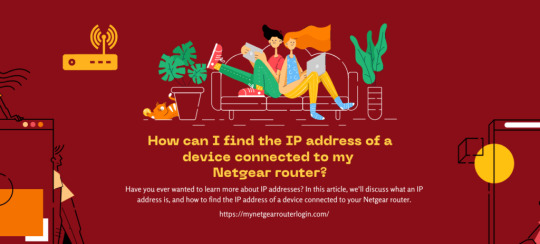
Have you ever wanted to learn more about IP addresses? In this article, we'll discuss what an IP address is, and how to find the IP address of a device connected to your Netgear router.
What Is An IP Address?
An IP address is a unique numerical identifier assigned to each device connected to the internet protocol for communication. It allows devices to communicate with each other and find each other on the network. Every device has a different IP address, and they are usually assigned by your ISP (internet service provider). You can think of an IP address like a phone number for your computer - it's how other devices on the internet know how to find and connect to it.
You can find the IP address of any device connected to your router by logging into your router's web interface and looking at the list of connected devices. The IP address will be listed next to each device.
How to Find the IP Address Of A Device Connected To Your Router?
When it comes to finding the IP address of a device connected to your router, there are several methods you can use. Here is a list of them:
Through the Router's Web Interface
The easiest way to find the IP address of a device connected to your router is through the router's web interface.
To identify the IP address of a device connected to your router:
- Access the login page for your router. For NETGEAR routers, refer to the instructions on "How do I log in to my NETGEAR home router?" Note: If you do not have a NETGEAR router, consult your specific model's user manual or support page.
- Locate the section of the router's web interface that displays connected devices.
- On NETGEAR routers, navigate to the "Attached Devices" page under the "BASIC" tab. Note: The menu label may vary on other models and be called "Device Manager" or similar.
- Each connected device will display information such as the device name and IP address. For further assistance, refer to your router's support page or contact NETGEAR Support.
Using a Command Prompt (Windows)
If you're using Windows, you can find your IP address by opening a command prompt and typing "ipconfig". Your IP address will be displayed next to the "IPv4 Address" field.
Using Network Settings (MacOS/iOS)
If you want to find the IP address of a device connected to your router, you can do so using the network settings on your Mac or iOS device.
- Access System Preferences and select the Network option.
- Select the location that corresponds to your current network setup (if you need help determining which one it is, look at the network icon in the menu bar).
- Click on Advanced and then select the TCP/IP tab.
- The IP address will be listed next to "Router".
Using a Network Scanner
A third way to find the IP address of a device connected to your router is by using a network scanner. Network scanners are software tools that scan your network and provide information about connected devices, including IP addresses. There are many different network scanners available, both paid and free. Some popular options include Fing and Advanced IP Scanner.
Note: It's worth noting that some devices may have a dynamic IP address which can change over time.In conclusion, finding the IP address of a device connected to your router is a straightforward process that can be accomplished using various methods. Whether you choose to use the router's web interface, command prompt or terminal, or a network scanner, you should be able to quickly identify the IP address of the device you are trying to locate. Knowing the IP address of a device connected to your router can be helpful in a variety of situations, such as troubleshooting network issues or configuring security settings. With this knowledge, you can easily manage and maintain your home network.Reference form: https://mynetgearrouterlogin.com/find-the-ip-address-of-connected-device/
Read the full article
#mynetgearrouterlogin#IPaddress#router#network#deviceIP#networkmanagement#homenetwork#networktroubleshooting#IPconfig#networkscanner#netgear
0 notes
Text
Starlink Wireless Bridge.
Here we have a Starlink that we had fitted on a garage due to the thatched cottage being a listed building.
We installed the Starlink a few weeks ago and returned to install a wireless bridge from the garage back to the house to get the internet across the property.
We installed 2 Ubiquiti Nanobeams which can send the internet up to 15km and are ideal for this short distance, one was fitted alongside the starlink and the other was fitted into the house with approx 180mbs going to the house so no loss in speeds.
From there we installed a Deco mesh network and the customer now has high speed internet everywhere around the property.
For more info or to book feel free to get in touch.
www.homenetworksolutions.tech
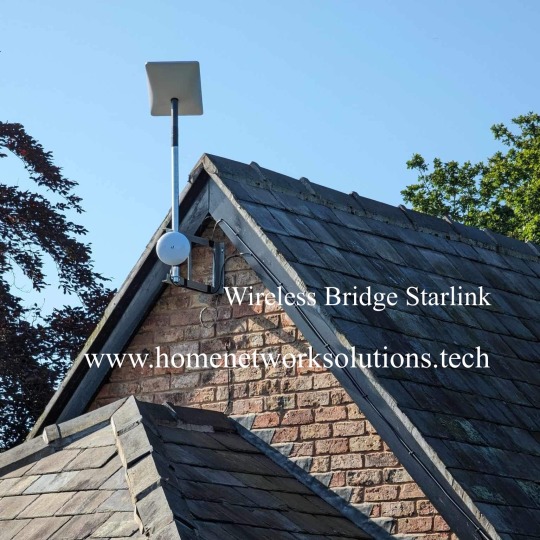
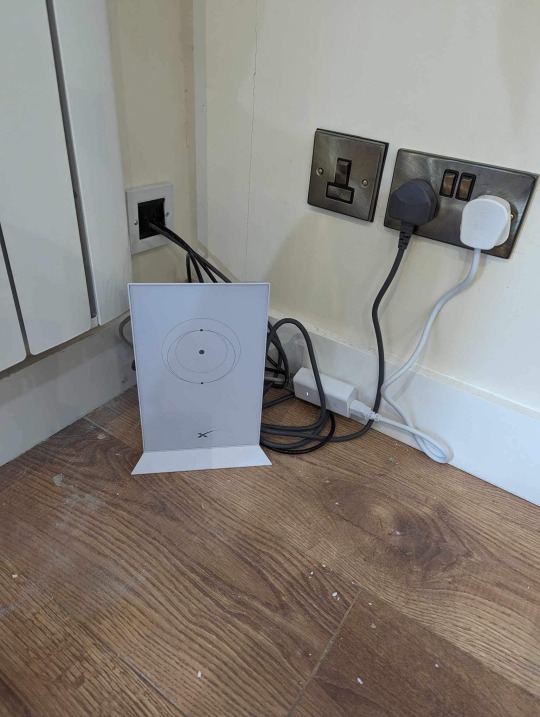

0 notes
Photo
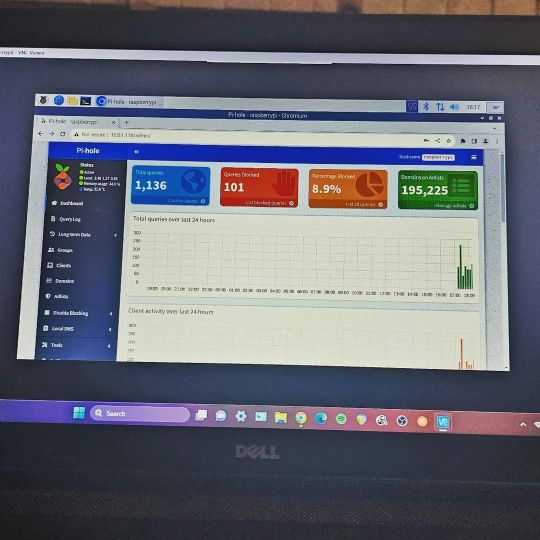
My Unbound DNS and @pi.hole are back up and running! www.linktr.ee/pnwcomputers #RaspberryPi #Pihole #debian #linux #dns #unbounddns #adblock #adblocking #dnsfilter #privacy #ads #pnwcomputers #pacificnwcomputers #itguy #computers #networking #network #homenetwork #bullseye #debianlinux (at Pacific NorthWest Computers) https://www.instagram.com/p/Cqt6wcypVYg/?igshid=NGJjMDIxMWI=
#raspberrypi#pihole#debian#linux#dns#unbounddns#adblock#adblocking#dnsfilter#privacy#ads#pnwcomputers#pacificnwcomputers#itguy#computers#networking#network#homenetwork#bullseye#debianlinux
1 note
·
View note
Photo

New cooling station is in service. New network hard drives need power and ethernet connections. So I made a printer stand. Its purpose is to raise the printer so as to provide somewhere for the new battery backup. Also switched over all the ethernet connections to a new 16 port ethernet switch, and mounted it where the old 8 port device was located. #woodworking #networkhardware #ethernet #homenetwork #scrapwoodproject https://www.instagram.com/p/Cp8ltVduuph/?igshid=NGJjMDIxMWI=
0 notes
Text
Seamless WiFi Excellence: Exploring the D-Link EAGLE PRO AI Mesh WiFi 6 Router System
In today’s hyper-connected world, where streaming, gaming, and remote work are the norm, a reliable and robust WiFi system is not just a luxury but a necessity. Enter the D-Link EAGLE PRO AI Mesh WiFi 6 Router System (M32), a game-changer in the realm of home networking. After putting this system through its paces, we can confidently say that it’s a true powerhouse, delivering blazing-fast…
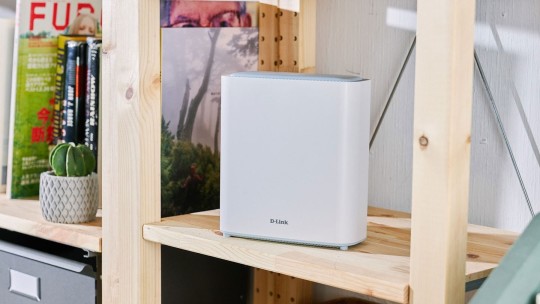
View On WordPress
0 notes
Text
Can You Test Coax Cable Signal with a Multimeter?
Defining Coaxial Cables
Coaxial cables are a common type of electrical cable used for transmitting signals such as cable television, internet, and radio frequency (RF) signals. They consist of a central conductor, insulating layer, metallic shield, and outer insulating layer. The design of coaxial cables is optimized for high-frequency signal transmission and shielding against interference.

Testing Coax Cable Signal with a Multimeter
While multimeters are versatile tools for measuring electrical properties like voltage, current, and resistance, they have limitations when it comes to testing coax cable signals. However, in certain scenarios, a multimeter can provide basic insights into the condition of a coaxial cable:
Set to Resistance Mode: Switch the multimeter to measure resistance (ohms).
Probe Placement: With the coax cable disconnected from any devices, place one probe on the center conductor and the other probe on the outer shield.
Interpreting Readings: A low resistance reading indicates continuity, suggesting that the cable is not broken.
Limitations of Using a Multimeter
When it comes to testing coaxial cable signals, using a multimeter has its limitations. While multimeters are versatile tools for measuring electrical properties like voltage, current, and resistance, they are not specifically designed for testing high-frequency signals transmitted through coaxial cables. Here are some key limitations of using a multimeter for this purpose:
Limited Frequency Range: Multimeters are typically designed for low-frequency measurements and may not accurately measure signals in the high-frequency range used in coaxial cables. Coaxial cables transmit signals in the radio frequency (RF) range, which can be beyond the capabilities of most multimeters.
Inability to Measure Signal Strength: Multimeters cannot accurately measure the strength or amplitude of coaxial cable signals. Signal strength is a crucial parameter for assessing the quality and performance of a coaxial cable connection, especially in applications like cable television and internet.
Lack of Impedance Matching: Coaxial cables have a characteristic impedance that must be matched to the impedance of the connected devices for optimal signal transmission. Multimeters do not provide impedance matching capabilities, making them unsuitable for assessing impedance mismatches or signal reflections.
Limited Diagnostic Capabilities: While multimeters can detect continuity and basic faults in a coaxial cable, they cannot diagnose more complex issues such as signal degradation, impedance variations, or interference. Dedicated cable testers and signal analyzers offer more advanced diagnostic features for troubleshooting coaxial cable problems.
Risk of Damage to Multimeter: Coaxial cable signals can have higher voltage levels than typical low-voltage circuits, posing a risk of damage to the multimeter if not properly rated for the signal levels. Using a multimeter that is not designed for high-frequency signals may result in inaccurate readings or even damage to the device.
In summary, while a multimeter can provide basic continuity testing for coaxial cables, it is not suitable for measuring signal strength, impedance, or diagnosing complex issues. For accurate testing and troubleshooting of coaxial cable signals, it is recommended to use dedicated cable testers or signal analyzers specifically designed for this purpose. These tools offer the necessary frequency range, impedance matching capabilities, and advanced diagnostic features required for effective coaxial cable testing.
Alternative Methods for Testing Coax Cable Signal
When it comes to testing coaxial cable signals, there are alternative methods that offer more accurate and comprehensive results compared to using a multimeter. These methods are specifically designed for assessing signal quality, strength, and integrity in coaxial cable connections. Here are some alternative methods for testing coax cable signals:
1. Cable Testers
Cable testers are specialized tools designed for diagnosing issues in coaxial cable connections. They offer several advantages over multimeters, including:
Signal Quality Assessment: Cable testers can analyze the quality of the signal transmitted through the coaxial cable, including factors such as signal strength, impedance, and noise levels.
Fault Detection: Cable testers can identify common faults in coaxial cables, such as breaks, shorts, and impedance mismatches. They provide detailed diagnostic information to pinpoint the location and nature of the fault.
Connector Integrity: Cable testers assess the integrity of coaxial cable connectors, ensuring proper contact and minimal signal loss at connection points.
Interference Detection: Cable testers can detect sources of interference that may degrade signal quality, such as electromagnetic interference (EMI) or radio frequency interference (RFI).
2. Signal Analyzers
Signal analyzers are advanced instruments used for in-depth analysis of coaxial cable signals. They offer comprehensive testing capabilities and provide detailed insights into signal characteristics. Some key features of signal analyzers include:
Frequency Analysis: Signal analyzers can analyze signals across a wide frequency range, making them suitable for testing high-frequency coaxial cable signals used in applications like cable television and broadband internet.
Modulation Analysis: Signal analyzers can analyze signal modulation schemes used in digital communication systems, providing valuable information about signal encoding and modulation quality.
Error Detection: Signal analyzers can detect errors and anomalies in coaxial cable signals, helping diagnose issues such as data corruption, packet loss, and transmission errors.
Spectrum Analysis: Signal analyzers provide spectrum analysis capabilities, allowing users to visualize signal spectra and identify frequency components and interference sources.
3. Time Domain Reflectometers (TDRs)
Time domain reflectometers are specialized instruments used for locating faults and discontinuities in coaxial cables. They transmit pulses of electromagnetic energy into the cable and measure the time it takes for reflections to return. TDRs offer the following benefits:
Fault Localization: TDRs accurately locate faults, breaks, and impedance mismatches in coaxial cables by analyzing the time-domain response of reflected signals.
Distance Measurement: TDRs can measure the distance to faults along the length of the coaxial cable, providing precise location information for troubleshooting purposes.
High Resolution: TDRs offer high-resolution measurements, allowing users to identify small faults and discontinuities in the cable with precision.
In summary, cable testers, signal analyzers, and time domain reflectometers offer alternative methods for testing coax cable signals that provide more accurate and comprehensive results compared to using a multimeter. These specialized tools are essential for diagnosing issues, assessing signal quality, and ensuring optimal performance in coaxial cable connections.
Conclusion
While a multimeter can provide basic continuity testing for coaxial cables, it is not suitable for measuring signal strength or integrity. For accurate testing and troubleshooting of coax cable signals, invest in dedicated cable testers or signal analyzers designed for this purpose. By choosing the right tool for the job, you can ensure efficient and effective troubleshooting of cable TV, internet, and other coaxial connections.
0 notes
Text
Home Networking Device Market Opportunities, Sales Revenue, Competitive Landscape, Key Players Analysis and Trends by Forecast 2031
The market research study titled “Home Networking Device Market Share, Trends, and Outlook | 2031,” guides organizations on market economics by identifying current Home Networking Device market size, total market share, and revenue potential. This further includes projections on future market size and share in the estimated period. The company needs to comprehend its clientele and the demand it creates to focus on a smaller selection of items. Through this chapter, market size assists businesses in estimating demand in specific marketplaces and comprehending projected patterns for the future.
The Home Networking Device market report also provides in-depth insights into major industry players and their strategies because we understand how important it is to remain ahead of the curve. Companies may utilize the objective insights provided by this market research to identify their strengths and limitations. Companies that can capitalize on the fresh perspective gained from competition analysis are more likely to have an edge in moving forward.
With this comprehensive research roadmap, entrepreneurs and stakeholders can make informed decisions and venture into a successful business. This research further reveals strategies to help companies grow in the Home Networking Device market.
Market Analysis and Forecast
This chapter evaluates several factors that impact on business. The economics of scale described based on market size, growth rate, and CAGR are coupled with future projections of the Home Networking Device market. This chapter is further essential to analyze drivers of demand and restraints ahead of market participants. Understanding Home Networking Device market trends helps companies to manage their products and position themselves in the market gap.
This section offers business environment analysis based on different models. Streamlining revenues and success is crucial for businesses to remain competitive in the Home Networking Device market. Companies can revise their unique selling points and map the economic, environmental, and regulatory aspects.
Report Attributes
Details
Segmental Coverage
Technology
Wired
Wireless
Type
Router
Extenders
Ethernet Hub
Network Cards and Adapters
Others
Regional and Country Coverage
North America (US, Canada, Mexico)
Europe (UK, Germany, France, Russia, Italy, Rest of Europe)
Asia Pacific (China, India, Japan, Australia, Rest of APAC)
South / South & Central America (Brazil, Argentina, Rest of South/South & Central America)
Middle East & Africa (South Africa, Saudi Arabia, UAE, Rest of MEA)
Market Leaders and Key Company Profiles
Aerohive Networks (Dell)
Belkin International Inc.
Cisco Systems Inc.
D-Link Corporation
Huawei Technologies Co. Ltd.
Intel Corporation
NetGear Inc.
Qualcom Inc.
TP-LINK Technologies Co., Ltd.
VMWare Inc.
Other key companies
Our Unique Research Methods at The Insight Partners
We offer syndicated market research solutions and consultation services that provide complete coverage of global markets. This report includes a snapshot of global and regional insights. We pay attention to business growth and partner preferences, that why we offer customization on all our reports to meet individual scope and regional requirements.
Our team of researchers utilizes exhaustive primary research and secondary methods to gather precise and reliable information. Our analysts cross-verify facts to ensure validity. We are committed to offering actionable insights based on our vast research databases.
Strategic Recommendations
Strategic planning is crucial for business success. This section offers strategic recommendations needed for businesses and investors. Forward forward-focused vision of a business is what makes it through thick and thin. Knowing business environment factors helps companies in making strategic moves at the right time in the right direction.
Summary:
Home Networking Device Market Forecast and Growth by Revenue | 2031
Market Dynamics – Leading trends, growth drivers, restraints, and investment opportunities
Market Segmentation – A detailed analysis by product, types, end-user, applications, segments, and geography
Competitive Landscape – Top key players and other prominent vendors
About Us: [email protected]
0 notes
Text
Toronto Networking Solutions
Here are some of the networking solutions we provide:
-Wi-Fi setup and optimization
-Network security
-Smart home integration
-And more!
If you want Networking Solutions in Toronto, we would be happy to help! Contact us today! Go to our website to learn more about our products and services!

⚡ Learn More: https://voltronic.ca/services/networking-solutions/
📞 Phone: +1 (416) 276-6869
📬 Email: [email protected]
📍 Location: Greater Toronto Area
#TorontoNetworkingSolutions#NetworkSolutionsToronto#NetworkingSolutions#NetworkSolutions#NetworkSolution#NetworkingSolution#WifiToronto#HighSpeedInternet#InternetServiceProvider#WifiServiceProvider#HomeWifi#TorontoHomeWifi#TorontoHomeNetwork#ResidentialWiFi#TorontoInternet#HomeOptimization#TorontoHighSpeedInternet#HomeNetworking#TorontoHomeNetworking#WirelessUpgrade
0 notes
Text
0 notes
Text
Steps to Ensure the Security of Business and Home Network?
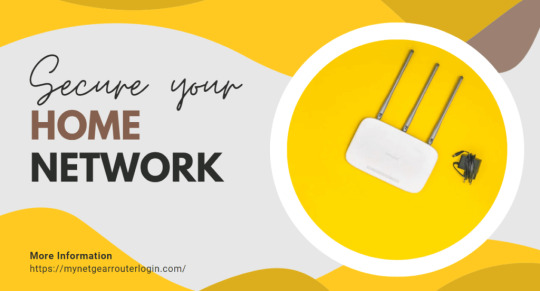
Wireless networks have transformed the way we connect to the internet, providing us with unparalleled convenience. However, with this convenience comes a crucial need to secure both personal and business Wi-Fi networks. Cybercriminals and hackers are constantly on the lookout for ways to exploit the vulnerabilities in Wi-Fi networks to gain access to sensitive information or cause harm. Therefore, it is vital to take the necessary steps to guarantee the safety and security of our home and business networks. This article will delve into various measures that can be employed to safeguard Wi-Fi networks used in homes and businesses.
What Steps Can I Take to Ensure the Security of My Home Wi-Fi Network?
Securing your home Wi-Fi network is crucial in protecting your personal and sensitive information from potential security threats. There are several steps you can take to secure your home network, including:
Encrypt Your Network: One of the most important steps in securing your home network is to encrypt your connection. WPA2 and WPA3 are the most secure options for encryption. It is recommended to use them to encrypt your network.
Change Your Router's Preset Passwords: Many routers come with preset passwords that are easily accessible by attackers. To avoid this, change the preset password to a strong, unique one that is not easily guessable.
Keep Your Router Up-to-Date: Router manufacturers frequently release software updates that address security vulnerabilities. It is important to keep your router's firmware up-to-date to protect your network.
Turn Off "Remote Management," WPS, and UPnP Features: Features such as remote management, WPS (Wi-Fi Protected Setup), and UPnP (Universal Plug and Play) can make your network vulnerable to attacks. It is recommended to turn off these features if they are not needed.
Restrict Access: Limit the number of devices that can connect to your network by using MAC filtering. This will prevent unauthorized devices from accessing your network.
By following these steps, you can help ensure the safety and security of your home Wi-Fi network. Remember, it's important to take the necessary steps to protect your personal and sensitive information from potential security threats.
To know in detail visit Referenced from: https://mynetgearrouterlogin.com/how-to-secure-your-business-home-wifi-network/
Read the full article
#router#wifi#internet#technology#network#homenetwork#modem#wireless#networking#vpn#cybersecurity#security#netgear#firewall#wifirouter
0 notes
Video
youtube
Elevate Your Home Network to New Heights: Achieve Unparalleled Connectiv...
Home network upgrade: Unleash the power of connectivity and security.
0 notes
Text
Supercharging Your WiFi: The Power of a Strong Antenna
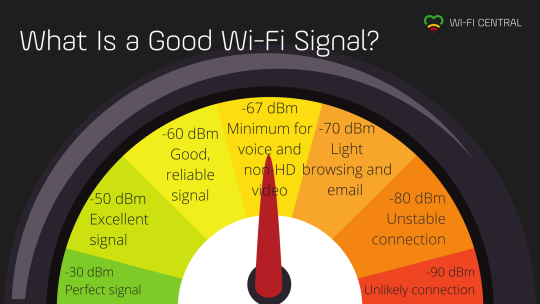
Hey tech enthusiasts and internet surfers! Are you tired of dealing with weak WiFi signals that turn your streaming and browsing into a buffering nightmare? Fear not, because today we’re diving into the world of strong antennas and how they can be your savior in the digital world.
1. Understanding the Basics: Why Your WiFi Needs a Boost
Before we dive into the solution, let’s talk about the problem. WiFi signals are essentially radio waves, and like any radio waves, they can be weakened by obstacles like walls, floors, and even large appliances. The further you are from the router, the weaker the signal.
2. The Hero of the Hour: A Strong Antenna
Enter the strong antenna! It’s not just a piece of tech wizardry; it’s your gateway to a stable and faster internet connection. A strong antenna can significantly boost the strength and range of your WiFi signal.
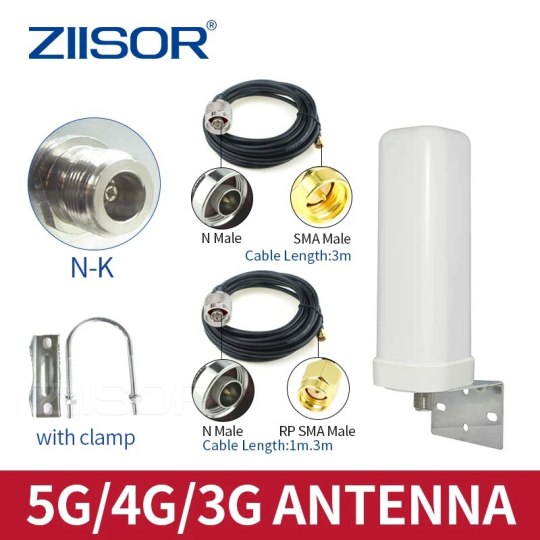
3. Types of Antennas: Directional and Omnidirectional
There are two main types of antennas: directional and omnidirectional. A directional antenna focuses the signal in a specific direction, offering a stronger signal over a narrower area. It's perfect if you're trying to reach a specific room or area. On the other hand, an omnidirectional antenna spreads the signal evenly in all directions, ideal for general use in homes.
4. Installation Tips: Positioning Matters
When installing your strong antenna, positioning is crucial. Place it high and in the center of your area for maximum coverage. Also, ensure it’s not obstructed by metal objects or electronic devices that can interfere with the signal.
5. Compatibility Check: Match Your Router
Not all antennas are created equal, and not all will work with your router. Check your router’s compatibility with the antenna. Look for the same connector type and ensure the frequency bands match.
6. Fine-Tuning: Adjusting for Perfection
Once installed, it might take a bit of tweaking to get it just right. Adjust the positioning of the antenna, try different angles, and test the signal strength until you find the sweet spot.
7. A Friendly Reminder: Secure Your Network
With great power comes great responsibility. A stronger signal can mean more vulnerability. Ensure your WiFi network is secured with strong passwords and updated security protocols.
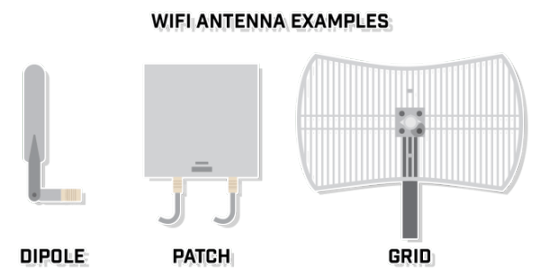
8. Beyond Antennas: Other Ways to Boost Your Signal
While a strong antenna is a fantastic solution, don’t forget other ways to boost your signal. These include updating your router’s firmware, using a WiFi extender, or simply reducing interference by repositioning your router away from electronic devices.
Conclusion: Embrace the Power of a Strong Antenna
A strong antenna can be a game-changer in your internet experience. It’s a simple yet effective way to enhance your WiFi signal, ensuring you stay connected in every corner of your space. So, go ahead, give your WiFi the boost it deserves, and enjoy seamless streaming and browsing!
Stay connected and tech-savvy!
#WiFiRevolution#SignalStrength#TechSavvy#InternetBoost#AntennaUpgrade#StreamingSmooth#DigitalLifeHacks#HomeNetworking#WirelessWonder#ConnectivityMatters
0 notes
Text
Starlink Installation Stalybridge.
Fixed Price Starlink Installation £200.00 complete includes all brackets..
Here we have a new Starlink installation carried out by Andy and Ethan in Stalybridge, Tameside for a recently renovated old farm house that now needed the internet updating.
The customer in this case had been using BT line but had now been offered the opportunity of working from home but the down side a good connection to the internet was needed for Zoom etc, the mobile network option was also a no go due to the remote location.
They had initially contacted us for a bit of advice about the reliability of Starlink and off the back of the phone call took the plunge and ordered the equipment.
The equip to arrived within a week and we arranged a date to do the install customer had sent over a few pictures of the property so we already new where it was going and again we offered a fixed fee including all the brackets. The Starkink was fitted on a alloy mast and galvanised bracket with cable fed down to the lounge with a wall socket brush plate to finish off, speeds of 190mbs coming in straight away so a very happy customer.
For more info or to book an install in Stalybridge or surrounding area feel free to get in touch.
www.soaceinternetsolutions.com

0 notes
Text
Motorola MG7700 Modem WiFi Router Combo with Power Boost
Intruduction
The Motorola MG7700 Modem WiFi Router Combo with Power Boost is a high-performance networking device that combines a modem and a Wi-Fi router into a single, compact unit. It is designed to deliver reliable and fast internet connectivity for cable plans up to 800 Mbps. This device is approved by major cable service providers like Comcast Xfinity, Cox, and Spectrum, making it a reliable choice for users who want to avoid compatibility issues with their ISP.
With its DOCSIS 3.0 technology, the Motorola MG7700 Modem WiFi Router Combo delivers ultra-fast internet speeds that can support multiple devices at the same time. The Gigabit Ethernet router ensures a fast and stable connection, making it perfect for online gaming, streaming, and downloading large files. The Power Boost feature amplifies the Wi-Fi signal, ensuring that users can enjoy fast internet speeds even in large homes or areas with weak signals. The setup process for the Motorola MG7700 Modem WiFi Router Combo is straightforward and user-friendly, allowing users to get online quickly and easily. The device also comes with advanced security features like WPA/WPA2 wireless security protocols, parental controls, and a firewall, ensuring that users can browse the internet securely and with peace of mind.
In summary, the Motorola MG7700 Modem WiFi Router Combo with Power Boost is a reliable, high-performance networking device that delivers fast and secure internet connectivity. Its compatibility with major cable service providers and user-friendly setup make it an excellent choice for users looking to upgrade their home network.
Features
BrandMotorolaModel NameMG7700 modemFrequency Band ClassDual-BandWireless Communication Standard5 GHz Radio FrequencyCompatible DevicesTablet, SmartphoneFrequency5 GHzRecommended Uses For ProductSecurityIncluded ComponentsCable Modem Router, Power Supply, Ethernet CableConnectivity TechnologyWi-Fi Built In, EthernetColorBlack, Grey
Read more>>>
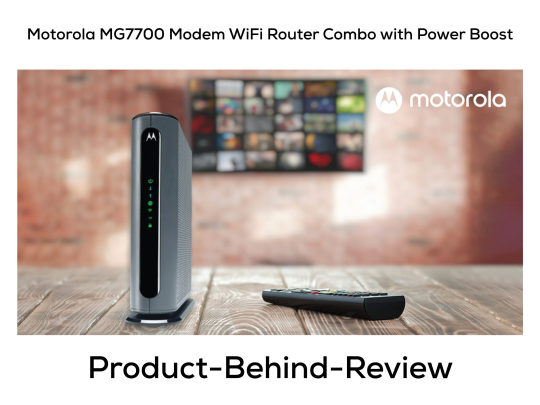
#MotorolaMG7700#ModemRouterCombo#WiFiRouter#PowerBoost#HighSpeedInternet#HomeNetworking#MotorolaModem#MotorolaWiFiRouter#InternetConnection#HomeInternet#TechGear#Networking#HomeOffice#WiFiBoost#MotorolaPowerBoost
0 notes
Photo

What is Access Control? Basically exactly what the name suggests. Controlling the access to your house or business by means of security systems that enable you to allow the right people in. There are so many options available now which include retina and finger print scanners as well as traditional key card and tag use. Access control systems are also alot more affordable than you think. With solutions for homes widely available. If you would like to upgrade your door station or entry points and bring them into the digital age get in touch to find out more #accesscontrolsecurity #accesscontrol #fingerprintscanner #retinascan #idtag #digitalsecuritycontrols #hiresecurity #alarmsystems #intercomsystem #smartcctv #accesscontrolinstallation #networkinstallation #homenetworks #datacabling #datarack #antennainstallation #cctvinstallation #sydneysecurity www.securityhiresydney.com.au [email protected] (at Sydney, Australia) https://www.instagram.com/p/CiyaJxbBJz1/?igshid=NGJjMDIxMWI=
#accesscontrolsecurity#accesscontrol#fingerprintscanner#retinascan#idtag#digitalsecuritycontrols#hiresecurity#alarmsystems#intercomsystem#smartcctv#accesscontrolinstallation#networkinstallation#homenetworks#datacabling#datarack#antennainstallation#cctvinstallation#sydneysecurity
0 notes